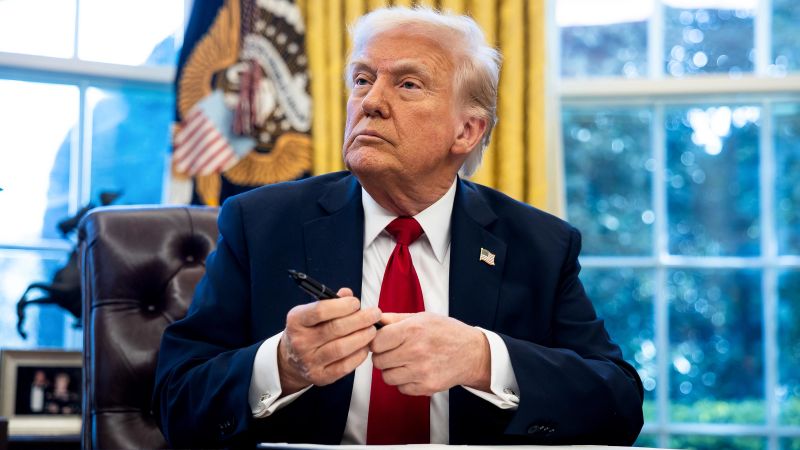In the wake of his inaugural address delivered in January, newly sworn-in President Donald Trump wasted no time in announcing his intentions for the country. By stating emphatically, “From this moment on, America’s decline is over,” he set a tone of urgency and resolution. His pledges to restore “faith, wealth, democracy, and freedom” to the nation resonated powerfully with his supporters; however, as the first 100 days of his presidency unfolded, mixed results began to surface.
After these initial three months, a CNN poll revealed Trump’s approval rating at a disappointing 41 percent, marking a record low for any president at this comparable juncture in their term. This stark number raised skepticism among Americans concerning his promises and showcased an unsettling discontent among the electorate. Despite the lukewarm response to his performance, few could deny that Trump had prioritized speed in executing his agenda.
Although only a single piece of legislation had been signed ceremoniously at the White House, Trump had managed to implement significant alterations across various domains, including the economy, foreign policy, federal workforce, and immigration enforcement. By enacting a flurry of executive orders, he endeavored to push his agenda through the corridors of power—often leaving his critics momentarily breathless. His drive for substantial change appeared relentless, yet inside the administration, frustrations grew regarding the pace at which certain policies, like the deportation of undocumented migrants and foreign negotiations, were moving.
As the president approached the 100-day mark, critical issues emerged that frustrated his attempts to rapidly secure desired agreements: the war in Ukraine and stalled trade discussions with China. Advisors surrounding Trump foresaw a narrow window in which substantial changes could be made, viewing his first two years in office as crucial to shaping his legislative legacy. Senior officials hinted at an impending surge in activity as the administration prepared for the 2026 congressional elections, focused on tax cuts and major policy initiatives.
Moreover, Trump’s previous term had imparted lessons on achieving his objectives swiftly, as he reflected on moments of caution that he regretted. This time, the team emphasized not waiting for the right opportunities but seizing them as they arose. However, chaotic scenes marked the White House, reminiscent of the early days of his first administration. Staff conflicts reemerged, with elevated tensions clustering around issues of loyalty and advisory roles, adding to the complexity of governance.
A pivotal figure in Trump’s circle is Susie Wiles, the chief of staff whose influence is substantial despite her low public profile. Described as the person Trump listens to the most, Wiles fine-tunes his focus, yet does not always restrain his more impulsive ideas. On multiple fronts, Trump faced resistance from other advisors like Treasury Secretary Scott Bessent, who encouraged prudence, especially during volatile market conditions, yet did little to divert him from escalating a trade war.
Moreover, foreign policy became a focal point for Trump as he grappled with complex negotiations involving nations such as Russia and Iran. His connection with longstanding allies, including Israeli Prime Minister Benjamin Netanyahu, underscores his approach towards the Middle East, punctuated by extravagant claims about transforming geopolitics.
As Trump navigated through his term, he frequently articulated his frustrations candidly, revealing unexpected challenges in diplomacy and negotiations with figures such as Vladimir Putin. The ongoing war in Ukraine presented particular difficulties. Trump struggled to distinguish the intentions behind Putin’s calculations, leading to a blend of frustration and reflection on his capacity to yield meaningful results within his administration.
With an eye towards crafting a legacy built on foreign policy successes, Trump appeared determined to host various international leaders to navigate the complexities of the geopolitical landscape actively. However, as the 2026 elections loomed larger on the horizon, the urgency was palpable; those within his inner circle recognized the necessity of maintaining a sustained drive to push through critical policies before possibly renouncing the power of their agenda in the face of midterm electoral fallout.
As gatherings shifted towards speculating who would succeed him, Trump maneuvered around discomforting conversations about his political fate, hinting at an interest in an unprecedented third term bantered within the party’s discourse. With every passing day of his presidency, the notion of legacy weighed heavily on his decisions, as he grappled with both immediate challenges and longer-term implications of his leadership.



